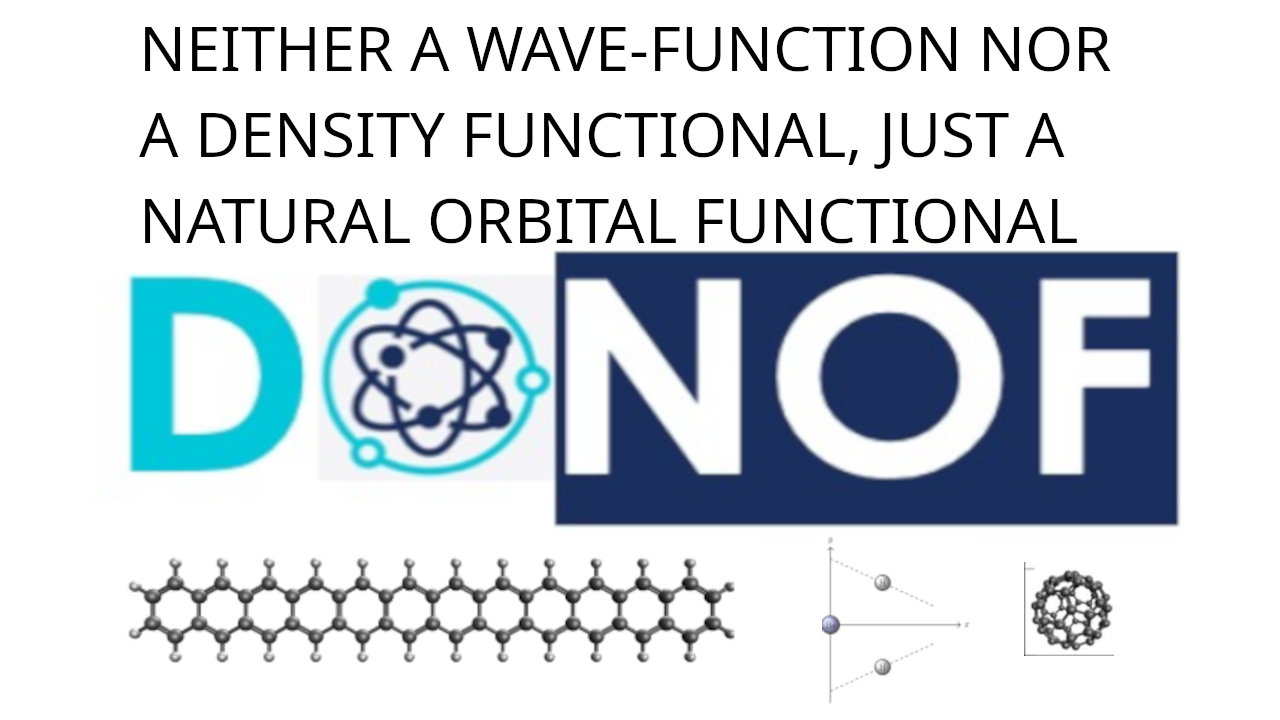

Ion Mitxelena (Université du Pays basque)
Since the non-relativistic Hamiltonian operator contains only one- and two-electron operators, the energy of an electron system in the non-relativistic Born-Oppenheimer approximation can be determined exactly from the knowledge of the one- and two-particle reduced density matrices (1- and 2-RDMs), much simpler objects than the wavefunction. Accordingly, one can employ the exact functional with an approximate 2-RDM that is built from the 1-RDM using a reconstruction functional. The major advantage of a 1-RDM formulation is that the kinetic energy is explicitly constructed and does not require a functional, in contrast to DFT.
The 1-RDM functional is called Natural Orbital Functional (NOF) [1,2] when it is based upon the spectral expansion of the 1-RDM. In this presentation, the theory behind the NOFT based approximations, PNOF5, PNOF7, and GNOF, is outlined, and some challenging examples are
presented. Special emphasis is put on strong correlation problems [3], where the latter offer an interesting alternative to CASSCF and CASPT2 approaches since the selection of an active space is not required. Recent calculations are presented to illustrate the performance of the aforementioned methods.
Lastly, we present DoNOF [4], the first publicly available open-source software to run NOF calculations, as well as its current capabilities and limits from both computational and accuracy perspectives.
[1] M. Piris, Adv. Quantum Chem. 90, 1-52 (2024) (Review on NOFT)
[2] K. Pernal & K. J. H. Giesbertz, Top. Curr. Chem. (2015) (Review on RDMFT)
[3] I. Mitxelena’s thesis on NOFT for strong correlation
[4] M. Piris and I. Mitxelena, Comp. Phys. Comm. 259, 107651 (2021)
[5] I. Mitxelena, J. F. H. Lew-Yee and M. Piris, to be published
Contact : C. Mejuto Zaera